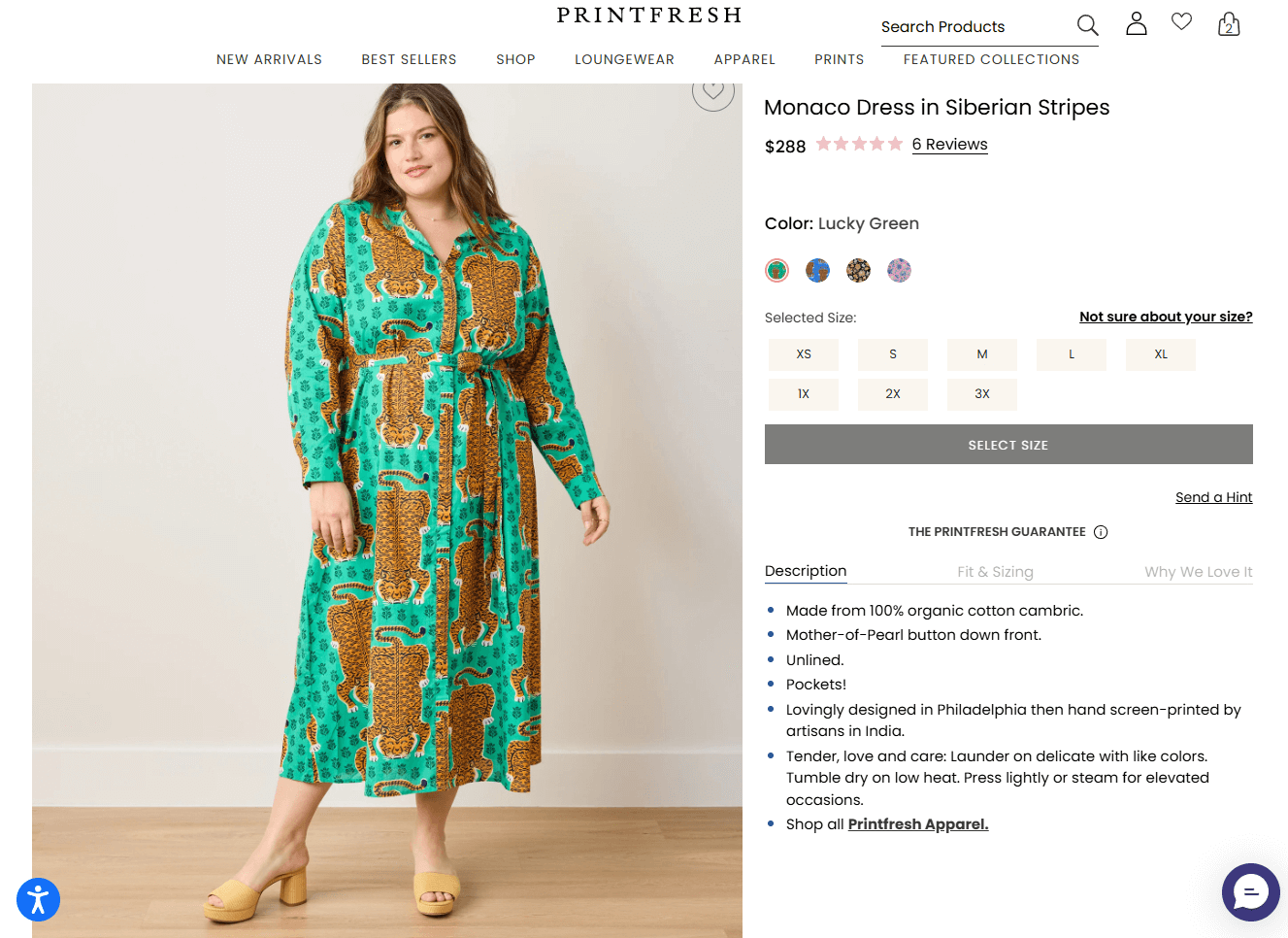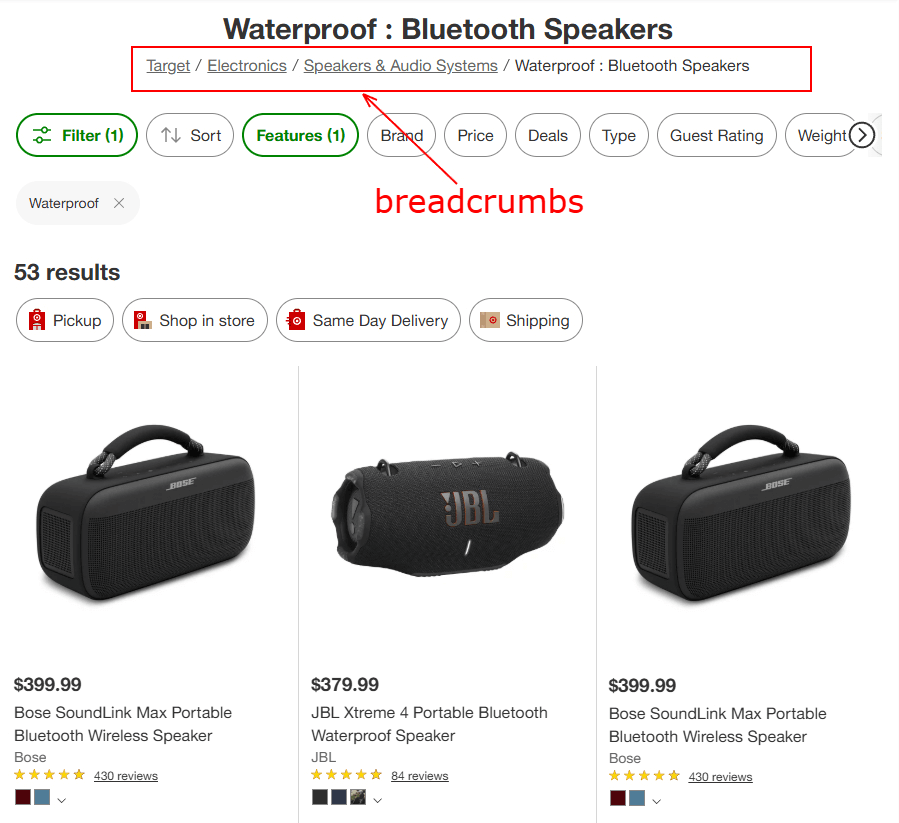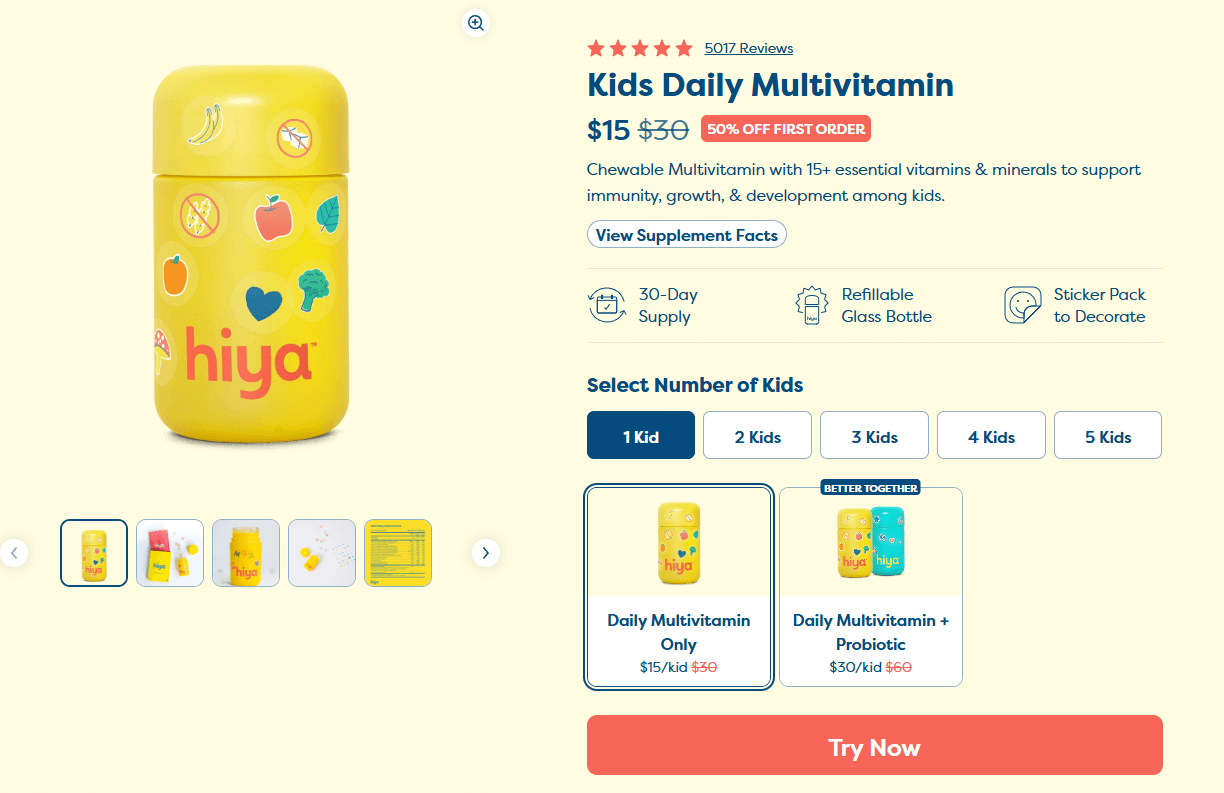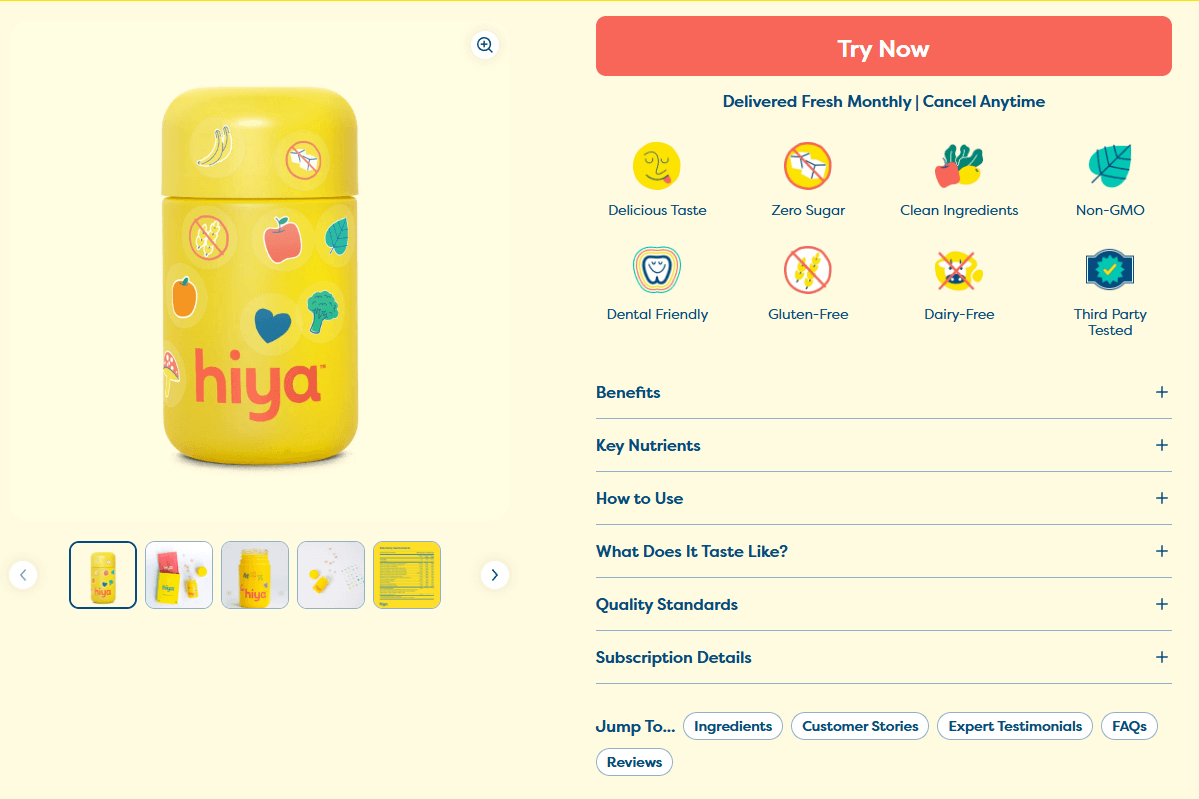Want to know the secret to getting more eyes on your products? It all starts with the smart optimization of your ecommerce pages.
Think of your online store as a physical shop window—every detail matters. From how you organize your products to how easily customers can find what they’re looking for, these elements boost your visibility and drive sales.
In this guide, I’ll share strategies to improve your product pages for search engines and shoppers. You’ll learn to optimize category pages, simplify navigation, and manage products across multiple categories.
By the end, you’ll have practical techniques to boost SEO, improve user experience, and turn more clicks into sales. Let’s get started.
Originally published on May 7th, 2024, this article was updated and republished on March 13th, 2025.
Has Your Store Lost Key Rankings?
We’ve conquered some of the most competitive D2C markets in the world – from women’s fashion to adult toys, subscription boxes to golf apparel.
If your business deserves to be on top, we’ll get you there.
Why SEO for Ecommerce Product Pages Is So Important
Optimizing your product page SEO ensures your products are easy to find and attract the right shoppers.
Fine-tuning elements like ecommerce page titles places your products where potential customers already search. This visibility brings in buyers who are genuinely interested in what you offer.
Strong SEO also helps your pages rank higher in search results, increasing organic traffic and reducing the need for paid ads.
But SEO isn’t just about getting visitors—it’s about turning them into customers.
Aligning your product pages with what shoppers are looking for creates a smoother, more engaging experience. This, in turn, encourages purchases.
With so many performance marketing strategies available, we’ll help you focus on the most effective ones to drive ecommerce sales efficiently.
Optimizing your product page SEO is like setting up the perfect beachfront shop where everyone can spot it and enter easily.
Ecommerce Product Page SEO Strategies to Help You Get Noticed
Standing out in ecommerce takes more than just showing up. Here are 14 top SEO strategies to help your product pages get noticed and increase sales.
Each covers a key way to improve your pages, from better keyword use to fixing conflicts between category and product pages.
You’ll find clear tips and examples to help turn visitors into buyers. Let’s jump in!
1. Perfect the Art of Keyword Optimization
Keyword optimization is fundamental to enhancing the search visibility of your product pages. Proper keyword usage ensures that your products appear in front of the right audience at the right time. This increases the chance of conversion.
Here’s how to effectively incorporate keyword optimization into your product pages.
- Keyword Research: Conduct comprehensive keyword research to identify terms that potential customers use. Focus on transactional keywords for buy buttons and product features. Then, commercial keywords for general product pages. And finally, information keywords for blogs or FAQ sections linked to your products.
- Keyword Placement: Carefully place your keywords in several critical parts of your product pages.
- Title Tags: Insert your primary keyword here to enhance visibility in search engine results.
- Meta Description: Include relevant keywords to improve click-through rates from search results.
- Product Descriptions: Integrate keywords to maintain natural readability while optimizing for search engines.
- URLs: Use clean, keyword-rich URLs to optimize each product page further.
2. Leverage High-Quality Images and Videos
Using high-quality images and videos can greatly improve ecommerce product pages. They boost SEO and make shopping more engaging.
Clear images and detailed videos help customers see products better, making decisions easier. This can reduce hesitation and lower return rates. Optimized visuals can also appear in image and video searches, increasing your visibility.

Here’s how to optimize them:
- Alt Text: Add clear, keyword-rich descriptions for each image. This helps search engines understand the content and improves accessibility.
- File Names: Use descriptive names with relevant keywords for images and videos.
- Compression: Reduce file sizes to speed up loading times without losing quality. Faster pages rank better and improve user experience.
Focusing on quality and optimization makes your product pages more appealing and helps them rank higher in search results. High-quality images and videos are key to any strong ecommerce SEO strategy.
3. Utilize Schema Markup for Rich Schema
Adding schema markup to your ecommerce product pages is crucial. It can make them more visible in search results and increase click-through rates (CTR).
Schema markup adds structured data to your page’s HTML. It helps search engines understand your content. It also shows more useful details in search results.
Here’s how it benefits your product pages:
- Better Search Listings: Schema markup makes your pages eligible for rich snippets. They display extra details like prices, availability, ratings, and reviews. This makes your listings more appealing.
- Higher CTR: Rich snippets attract more clicks. This is because they give users helpful information upfront. Ultimately, it makes your product look more relevant and trustworthy.
- Competitive Advantage: Many websites don’t use schema markup fully. So, adding it can help you stand out in search results.

Key Types of Schema to Implement
To maximize visibility and user engagement, ensure your product pages utilize these key schema types:
- Product Schema: Includes essential details like product name, description, price, availability, and SKU.
- Review Schema: Highlights customer ratings and reviews, improving credibility and click-through rates.
- Breadcrumb Schema: Enhances navigation and helps search engines understand site hierarchy.
- Video Schema: If your product pages contain video content, schema helps them appear in video search results. This further improves visibility.
Incorporating schema markup requires some technical skill. However, the payoff in enhanced search visibility and user engagement can be significant. Making your product pages more detailed and informative in search results helps attract visitors and boost conversions.
4. Craft Compelling Product Descriptions
Product descriptions help customers understand what you’re selling, why they need it, and why they should buy from you instead of a competitor.
Here’s how to effectively craft SEO-optimized product descriptions:
- Highlight Benefits: Focus on how the product improves the customer’s life, not just its features. Make them feel like they’re gaining experience or solving a problem.
- Use Sensory Words: Include words that evoke the senses, making the product feel real and tangible, and descriptions more vivid.
- Incorporate Keywords Naturally: Weave keywords that enhance SEO and resonate with your audience. This ensures the language remains relevant.
- Optimize for Scannability: Use bullet points and short paragraphs. This allows you to highlight key features and benefits and makes the text easy to scan.
- Encourage Action: Conclude with a strong call to action that motivates the reader to take the next step. This could be making a purchase or further exploration.
These strategies ensure your product descriptions inspire action and convert.

In the apparel industry? Read more SEO tips for fashion ecommerce!
5. Monitor Page Load Speed
The speed of your ecommerce site is crucial for both SEO and user experience. Here’s how to ensure your product pages load quickly:
- Minimize HTTP Requests: To decrease the load time, reduce the number of elements on each page, such as images, scripts, and CSS files.
- Optimize Images: Compress images without losing quality to ensure they load faster.
- Use Browser Caching: Store parts of your site in the user’s browser so they don’t need to reload every component with each visit.
- Evaluate Your Hosting Service: Ensure your hosting solution can handle your traffic and content size. Upgrading to a more robust service might be necessary as your site grows.
- Leverage Content Delivery Networks (CDNs): CDNs share your content across geographically diverse servers. This reduces delays in loading webpage content.
For platforms like Shopify, utilize built-in tools and apps that enhance page speed, such as WP Rocket. Research each platform’s set of best practices for optimization.

6. Refine User Experience with Intuitive Navigation
Make your website easy to navigate so customers can quickly find what they need. A clear structure also helps search engines understand your site, improving SEO.
Here’s how to improve navigation for a better user experience and search rankings:
- Clear Categories: Organize products into logical categories that match how customers search. This makes browsing easier.
- Search Functionality: Add a strong search feature so users can find products fast. Features like auto-complete and error correction (for misspellings) improve the experience.
- Breadcrumb Navigation: Use breadcrumb links so users can see where they are on your site and move back easily.
- Mobile Optimization: Make sure navigation works smoothly on mobile devices.
Improving site navigation helps visitors explore more, stay longer, and find what they need.
7. Manage Discontinued Products with SEO in Mind
Managing discontinued product pages effectively ensures that your SEO efforts are not wasted when a product goes out of stock.
Here’s how to maintain SEO value and keep user experiences positive. This works even when products are no longer available.
- Implement Redirects: Set up 301 redirects for discontinued product pages to relevant categories or similar products. This will guide users to alternatives and preserve the link equity that the original page had built up.
- Offer Alternatives: Suggest similar or upgraded products where the discontinued product once was.
- Email Sign-ups: Include an option for visitors to sign up for notifications. This could be restocking a favorite item or launching new products. This keeps them connected to your brand and encourages return visits.
Effectively managing discontinued product pages ensures no SEO value is lost over time.
8. Optimize Product Pages for Variants
Your product pages should clearly display variants without confusing search engines or shoppers.

You can do this with:
- Structured URLs: Give each variant a unique, organized URL that follows a logical pattern. This makes navigation easier for both users and search engines.
- Canonical Tags: Use canonical tags to tell search engines which page is the main version. This prevents duplicate content issues and strengthens SEO.
- Descriptive Titles and Meta Descriptions: Customize titles and descriptions to highlight key differences. This could include color, size, or material.
Optimizing product variants correctly improves search rankings and helps customers find what they need.
9. Prepare SEO Strategies for Seasonal Products
Maximizing visibility for seasonal products requires planning and strategic SEO. Preparing customers ahead of time for limited-time products can boost retention and sales.
Here’s how to make sure your seasonal products get noticed at the right time:
- Update Existing Pages: Keep the same pages each season instead of creating new ones. This strengthens SEO over time and keeps a familiar page for returning customers.
- Use Social Proof: Showcase reviews from past seasons to build trust and generate excitement.
- Optimize with Seasonal Keywords: Add relevant keywords before peak shopping times. Use Google Trends to track when interest is highest so your products rank well when demand surges.
These strategies help keep seasonal products visible. This ensures they attract the right customers at the right time.
10. Resolve Competition Between Category and Product Pages
Navigating the relationship between category and product pages should be clear and complementary.
Here’s how to structure your site to ensure these pages complement rather than compete.
- Keyword Strategy: Use broader, more general keywords for category pages. These pages should give a broad overview. For product pages, employ specific long-tail keywords that detail what’s available.
- Content Differentiation: Clearly differentiate the content on category and product pages. Category pages should offer a general introduction, setting the stage for the more detailed content found on product pages.
- Internal Linking: This strategy guides visitors from general category pages to specific product pages. This further enhances the user experience.
Differentiating and linking your category and product pages ensures they work well together, enhancing site navigation and SEO.
11. Enhance Products Featured in Multiple Categories
A product can fit into multiple categories without hurting SEO if managed correctly.
Here’s how to list products in different categories while avoiding duplicate content issues:
- Canonical Tags: Use canonical tags to tell search engines which version of a product page is the main one. This prevents duplicate content and keeps SEO strong. For example, a /waterproof-bluetooth-speaker/ can be listed under both /electronics/ and /outdoor-gear/, but one page should have the canonical tag pointing to the preferred URL.
- Breadcrumb Navigation: Breadcrumbs help users understand where they are on your site and make it easy to navigate back to broader categories.

These strategies let you display products in multiple categories while keeping SEO intact.
12. Topical Authority and Hierarchy
Search engines favor websites that show expertise and cover topics in depth. Structuring your ecommerce store with a clear content hierarchy helps search engines understand your pages. This improves rankings and makes navigation easier for customers.
Here’s how to build and strengthen topical authority:
Organize Products and Categories into Logical Groups
Instead of treating each product page as separate, connect them through structured content hubs:
- Category Pages as Pillars: These should target broad, high-traffic keywords. This provides an overview of related products.
- Product Pages as Supporting Content: Each product should target specific long-tail keywords and link back to its category page.
- Informational Content for Support: Blog posts, guides, and FAQs should link to relevant product and category pages. This allows you to reinforce your expertise.
For example, an outdoor gear store could structure its content like this:
- Category Page: “Waterproof Hiking Boots”
- Product Pages: “Men’s Lightweight Waterproof Hiking Boots” / “Women’s Insulated Hiking Boots”
- Supporting Content: A blog post titled “How to Choose the Best Waterproof Hiking Boots” that links to category and product pages.
Create Detailed Cornerstone Content
Some topics require in-depth coverage. Cornerstone content helps establish expertise and links to multiple product pages. Examples include:
- Buying Guides: “The Complete Guide to Organic Skincare Products”
- Comparison Articles: “Leather vs. Vegan Leather: Which is Better?”
- How-To Articles: “How to Style a Midi Dress for Every Season”
Use Internal Links for Better Navigation
Strategically linking pages improves site structure and boosts SEO. Follow these best practices:
- Use descriptive anchor text instead of generic phrases like “click here.”
- Keep important pages within three clicks from the homepage.
- Link horizontally between related products (e.g., an insulated hiking boot page linking to waterproof hiking socks).
A well-structured content hierarchy improves search rankings, increases engagement, and helps turn visitors into customers.
13. Showcase Trust, Reviews, & FAQs
Trust is one of the most significant deciding factors in ecommerce. Customers need reassurance that they’re making a wise purchase from a reputable store.
There are various ways you can do this. You can incorporate customer reviews, trust signals, and an informative FAQ section. This allows you to increase credibility, reduce friction, and increase conversions.
Build Credibility with Customer Reviews & Ratings
Search engines and shoppers value user-generated content. This makes reviews one of the most powerful tools for SEO and conversions. To maximize their impact:
- Display reviews prominently near the top of product pages, not just at the bottom.
- Encourage more reviews with post-purchase emails, loyalty rewards, or discount incentives.
- Use structured data to ensure star ratings appear in search results, improving CTR.
A good practice is to showcase key insights such as “92% of customers recommend this product.” You could also highlight trending reviews that mention benefits like durability or ease of use.

This product page from Hiya builds trust by displaying customer reviews, star ratings, and a clear discount offer. Key trust signals—like a satisfaction guarantee, eco-friendly packaging, and high-quality visuals—boost credibility and drive conversions.
Reinforce Trust with Security & Policies
Customers hesitate to buy if they don’t feel secure. You can boost confidence by clearly displaying:
- SSL & Payment Security: Show secure checkout indicators and accepted payment methods (Visa, PayPal, BNPL options).
- Return & Refund Policies: Place a “Hassle-Free Returns” or “Money-Back Guarantee” badge near the “Add to Cart” button.
- Shipping Transparency: Clearly outline estimated delivery times and costs to eliminate surprises.
These trust elements should be highly visible on product pages, especially near conversion points.
Answer Key Customer Questions with an Optimized FAQ Section
A well-structured FAQ section reduces buying hesitation and improves SEO by addressing common concerns upfront. Keep it concise and focus on:
- Product Specs & Compatibility: “Is this waterproof?”
- Shipping & Returns: “How long does delivery take?”
- Usage & Care Tips: “How do I clean this item?”

If we take another look at Hiya, we see they build trust by highlighting product benefits, third-party testing badges, and a clear FAQ section.
The FAQ section at the bottom of the page answers common questions about ingredients, usage, and subscriptions. This helps shoppers find information quickly and removes doubts.
Making trust signals, reviews, and FAQs easy to find creates a smooth shopping experience. This reassures customers and increases sales.
14. Track Your Product Page SEO Progress
You need to set clear objectives to ensure your SEO efforts are effective.
Define what success looks like. Are you aiming for more traffic, higher rankings, or increased sales?
Use tools like Google Analytics to observe key metrics like visitor behavior and page performance. These can help you understand how users interact with your product pages.
Track your keyword rankings with tools like Semrush and monitor your pages’ loading speeds. These indicators can help you adjust your SEO strategies as needed.
You can systematically enhance your SEO efforts by continuously analyzing and refining based on this data. Learning from successes and setbacks will help you optimize your approach over time. The result is a smoother ecommerce experience.
Let’s Make Your Site Shine with Ecommerce Product Page SEO
Optimizing your ecommerce product pages requires the right strategies and tools to shine.
From enhancing page load speeds to crafting compelling product descriptions, each aspect of SEO plays a crucial role in boosting your online visibility and attracting more customers.
Let us help you get the most out of your product pages. Our ecommerce SEO services will guide you through the complex currents of organic search, attract attention, and drive conversions.
Contact us to turn your product pages into prime destinations for your customers.

